Urea CAS: 57-13-6
Exploring the Properties and Reactions of Urea for Sale
Introduction
Urea, a versatile compound with various applications, exhibits intriguing properties and undergoes distinct reactions under different conditions. In this article, we will delve into the characteristics of urea, its behavior in varying temperatures and humidity levels, as well as its interactions with different substances. By understanding these aspects, we can gain valuable insights into the fascinating nature of urea.
The Influence of Temperature and Humidity
Urea’s behavior is greatly influenced by temperature and humidity. Below 20℃ and with a relative humidity below 70%, urea does not absorb moisture. On the contrary, it promotes water evaporation and reduces its own water content. However, as the temperature rises above 20℃ and the relative humidity exceeds 80%, urea begins to absorb moisture. In severe cases, it can become mushy. Furthermore, when the surrounding air becomes dry, urea tends to re-agglomerate, second only to ammonium nitrate in its moisture-absorbing properties.
Hydrolysis and Decomposition at High Temperatures
When a urea aqueous solution reaches 80℃, hydrolysis and decomposition reactions take place. These reactions result in the formation of ammonium carbamate, ammonia gas, and carbon dioxide. The hydrolysis and decomposition processes are accelerated in the presence of acidic or alkaline conditions, further contributing to urea’s transformation when exposed to heat.
Urea’s Affinity for Compound Formation
Urea readily combines with straight-chain carbohydrates to form crystal add-on compounds. Additionally, it can form double salts with various inorganic compounds, including Ca(NO3)2·4CO(NH2)2, NH4Cl·CO(NH2)2, CaSO4·4CO(NH2)2, MgSO4·4CO(NH2)2·3H2O, and Mg(NO3)·4CO(NH2)2·2H2O. Furthermore, urea can react with monocalcium phosphate, resulting in the production of urea phosphate, dicalcium phosphate, and water. This reaction can be represented as follows: Ca(H2PO4)2·H2O+CO(NH2)2→H3PO4·CO(NH2)2+CaHPO4+H2O.
Reactions with Nitric Acid and Formaldehyde
Urea exhibits interesting reactions when combined with nitric acid and formaldehyde. When urea reacts with nitric acid, relaxed urea nitrate is produced: CO(NH2)2+HNO3→CO(NH2)2·HNO3. On the other hand, urea can form compounds with formaldehyde, particularly urea formaldehyde compounds, also known as urate gum. Among these compounds, urea resin has a high formaldehyde ratio, while urea itself has a low formaldehyde ratio.
Urea for Sale
CAS: 57-13-6
Molecular formula CH4N2O
Molecular weight 60.06
EINECS number 200-315-5
Melting point 132-135°C(lit.)
Boiling point 332.48°C(estimate)
Density 1.335g/mLat25°C(lit.)
Vapor pressure < 0.1 hPa (20 ° C)
Refractive index n20/D1.40
Storage conditions 2-8°C
Solubility H2O:8Mat20°C
Morphology powder
Acidity coefficient (pKa)0.10(at25℃)
Color white
Specific gravity 1.335
PH 8.0-10.0(20℃,8MinH2O)
The Odor is almostodorless
Water solubility 1080g/L(20ºC)
Maximum wavelength (λmax)λ:260nmAmax:0.03λ:280nmAmax:0.02
Merck 14,9867
BRN 635724
Stability substances to be avoided include strong oxidizing agents. Protect from moisture.
InChIKeyXSQUKJJJFZCRTK-UHFFFAOYSA-N
LogP-1.660 (est)
Urea for Sale: An Exceptional Nitrogen Fertilizer
Introduction
Urea stands as a vital nitrogen fertilizer renowned for its superior quality and efficiency. Initially utilized in Germany as a fertilizer after World War I, urea has proven to be highly beneficial for all crops. Its high nitrogen content and absence of side components contribute to significant yield increases. Over time, urea has emerged as a prominent nitrogen fertilizer variety, surpassing ammonium nitrate in popularity. In this article, we will delve into the properties, application, and advantages of urea as a nitrogen fertilizer.
Urea’s Rise in Agricultural Importance
Urea’s journey as a preferred nitrogen fertilizer began in the 1950s. From 1960 to 1975, global urea production witnessed a remarkable increase of 10.5 times. Consequently, urea gradually replaced ammonium nitrate, securing its position as the most widely used nitrogen fertilizer worldwide. The exceptional growth in urea production signifies its recognition as an effective and reliable choice for enhancing agricultural productivity.
Urea’s Behavior in Soil and Plant Absorption
Upon application to the soil, a small portion of urea is absorbed by plants in the form of amide. However, under the influence of urease enzymes, the majority of urea undergoes hydrolysis, converting into ammonia. This ammonia is subsequently absorbed by plants, contributing to their growth and development. The rate of urea decomposition depends on factors such as soil conditions, temperature, and water content. Generally, within 3 to 10 days, urea is efficiently transformed, ensuring prolonged fertilizer effectiveness and minimal nitrogen loss.
Advantages of Urea in Fertilization
Urea possesses several advantages that make it an ideal choice for topdressing applications outside the root zone. Firstly, urea does not contain any harmful ingredients that could adversely affect crops. It maintains a neutral pH, thereby preventing any burning of stems and leaves. Additionally, urea exhibits hygroscopic properties, enabling it to penetrate leaves easily when accompanied by water. This promotes rapid absorption by crops, enhancing their nutrient uptake. The recommended concentration for topdressing outside the root zone generally ranges from 0.5% to 2%.
Optimal Utilization of Urea
To maximize the efficiency of urea utilization, it is essential to understand its properties and application conditions while maintaining a balanced approach. Urea serves as a neutral fertilizer, devoid of harmful substances. The hydrolyzed products, NH+4 and HCO-3, are readily absorbed and utilized by crops. Prolonged application of urea does not typically have adverse effects on soil properties, making it suitable for a wide range of crops and soil types. In terms of fertilizer effectiveness, urea performs similarly to ammonium sulfate with an equal nitrogen content. However, it outperforms ammonium sulfate in paddy fields that lack active iron and are susceptible to hydrogen sulfide poisoning, commonly known as “senile” paddy fields.
Precautions and Considerations
While urea offers numerous advantages, excessive application or high biuret content can potentially lead to ammonia and biuret toxicity in crops. Crops with higher urease activity tend to be more sensitive to urea and biuret. Therefore, it is crucial to maintain proper dosage and monitor urea levels to prevent any negative impacts on crop health.
Additional Applications of Urea
Apart from its significance as a nitrogen fertilizer, urea finds application in various industries. It serves as a crucial raw material for the synthesis of ureaaldehyde, melamine-formaldehyde resin, and other industrial compounds. In the pharmaceutical field, urea plays a role in the production of drugs such as tetracycline, phenobarbital, and caffeine. The dye industry utilizes urea in the manufacturing process of reduced brown BR and phthalein blue B. Moreover, urea is commonly packaged in plastic film-lined woven bags and should be stored in dry warehouses, away from any acid materials.
You can find more information
on our web, so please take a look.



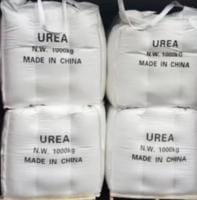
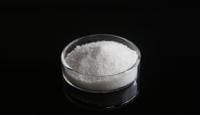
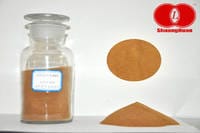



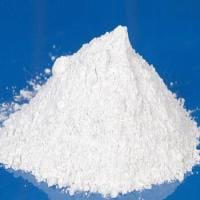

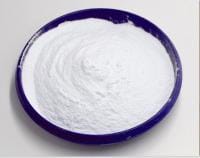

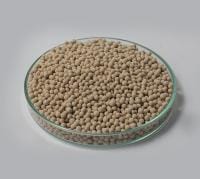











Reviews
There are no reviews yet.